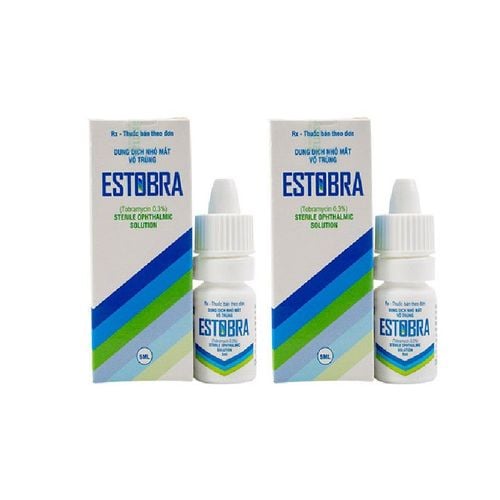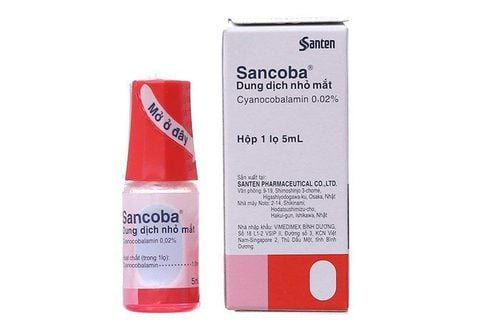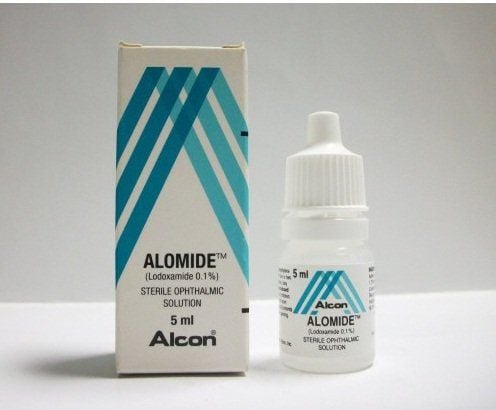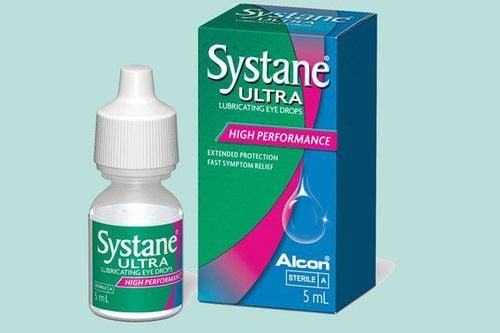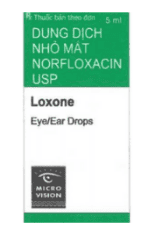This is an automatically translated article.
Hylaform is an eye drop that is available at many drugstores nationwide. Many patients wonder about the uses and side effects of Hylaform. The following article will provide readers with general information about this type of eye drops.
1. Uses of Hylaform
The main ingredient of Hylaform is sodium hyaluronate with the content of 1mg/1ml of drug solution. Excipients in the formulation include benzalkonium chloride, disodium edetate, disodium hydrophosphate, monosodium dihydrophosphate, sodium chloride and distilled water for injection. The drug is usually packaged in a 5ml or 10ml tube.
The mechanism of action of the drug is because the active ingredient of the drug has the same structure as the natural sodium hyaluronate and the molecular weight is over 4000 KDa, so the drug has biocompatibility, elasticity and high viscosity. The active ingredient of sodium hyaluronate is created from modern microbiological incubation, so the preparation contains low protein content and absolutely no inflammatory substances. Thanks to its high elasticity and viscosity, the drug is effective in maintaining and protecting corneal epithelial cells. Preclinical studies have shown that sodium hyaluronate can form a biological compound that accelerates the wound healing of corneal epithelial cells and has good water retention properties. Hylaform is used to treat dry eye symptoms, treat corneal epithelial disorders caused by causes such as Stevens-Johnson syndrome, Sjogren's syndrome, after eye surgery, drug use, eye trauma or pregnancy lens .
2. Dosage of Hylaform
The usual dose of Hylaform is 1 drop each time, 5 - 6 times per day. The dosage of the drug may vary depending on the symptoms of the individual patient. Patients should follow the dosage prescribed by the doctor.
3. Contraindications to Hylaform
Do not use Hylaform in patients who are allergic to any of its ingredients.
4. Unwanted Effects (Side Effects)
Hylaform can cause some side effects on the eyes including: Itchy eyes, eye irritation, conjunctivitis, blepharitis, eyelid inflammation, keratitis, pain in the eyes, conjunctival congestion... Patients should inform their doctor about unwanted effects encountered while using the drug.
5. What are the precautions when using Hylaform?
The drug is for eye drops only, not for oral or injectable use. Avoid touching the tip of the Hylaform ampoule to any surface, including the eye to prevent infection. Do not use Hylaform while wearing contact lenses. Interactions with other drugs: No drug interactions have been found in the references. Storage: Hylaform should be stored in a cool, dry place, away from light, at a temperature below 30 degrees Celsius. After opening, the patient should close the lid tightly after each use. Driving: Local effects immediately following instillation may affect the ability to drive and use machines, therefore caution should be exercised when hylaform is administered to drivers and to operate machines. Pregnancy: There are no studies on the use of sodium hyaluronate eye drops in pregnant and lactating women. Therefore, patients should be cautious when taking the drug during pregnancy and lactation. Hylaform shelf life is 36 months from date of manufacture and 15 days after opening. Overdose: There is currently no information on overdosage of sodium hyaluronate eye drops. In summary, Hylaform is an effective eye drop for the treatment of dry eye, a corneal epithelial disorder of various etiologies. Patients should not self-medicate, but should consult a doctor or pharmacist before use.
Please dial HOTLINE for more information or register for an appointment HERE. Download MyVinmec app to make appointments faster and to manage your bookings easily.




